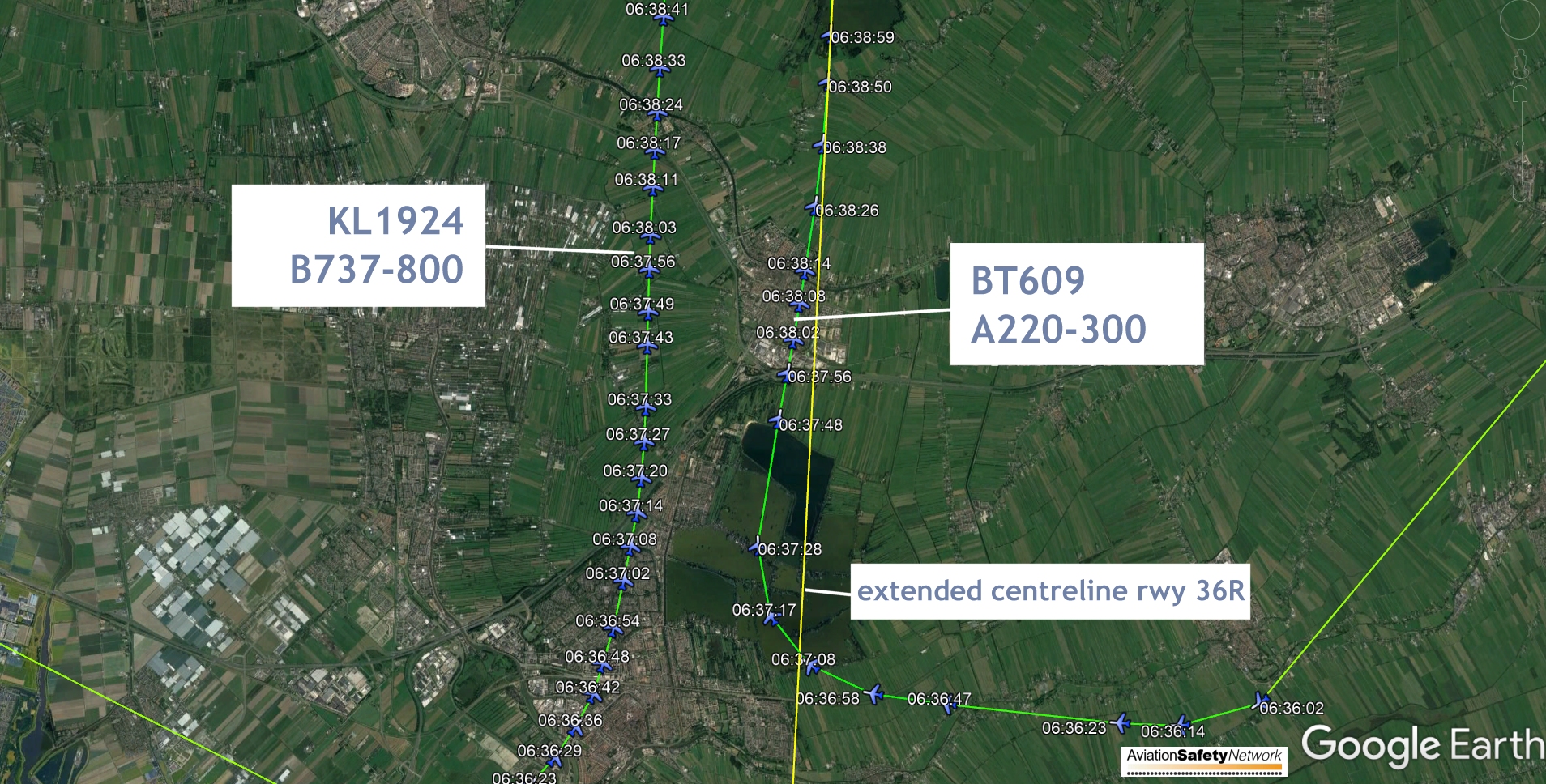
ASN Wikibase Occurrence # 246193
This information is added by users of ASN. Neither ASN nor the Flight Safety Foundation are responsible for the completeness or correctness of this information.
If you feel this information is incomplete or incorrect, you can submit corrected information.
| Date: | Monday 28 September 2020 |
| Time: | 06:37 UTC |
| Type: |  Airbus A220-300 |
| Owner/operator: | Air Baltic |
| Registration: | YL-CSM |
| MSN: | 55042 |
| Fatalities: | Fatalities: 0 / Occupants: |
| Aircraft damage: | None |
| Category: | Serious incident |
| Location: | Amsterdam-Schiphol International Airport (AMS/EHAM) -
 Netherlands Netherlands
|
| Phase: | Approach |
| Nature: | Passenger - Scheduled |
| Departure airport: | Vilnius Airport (VNO/EYVI) |
| Amsterdam-Schiphol International Airport (AMS/EHAM) | |
| Confidence Rating: |
KLM Flight KL1924 from Geneva, a Boeing 737-800 (PH-BCE), was performing an approach to runway 36C at Amsterdam-Schiphol International Airport (AMS), the Netherlands. The aircraft was flying at an altitude of 4000 feet. Coming in from the east, Air Baltic flight BT609, an Airbus A220-300 (YL-CSM), was on approach with the intention to land on runway 36R. This aircraft was descending to an altitude of 3000 feet.
There were two approach controllers on duty at the time, one assigned to runway 18L-36R and another to runway 18C-36C.
The approach aircraft controller for runway 18L-36R instructed the A220 to descend to an altitude of 3000 feet according to the established procedure for this runway combination. The pilot confirmed this instruction. The Boeing was already flying at an altitude of 4000 feet, as instructed by the approach traffic controller for runway 18C-36C, according to the procedure for this runway combination. The A220 was reducing its speed, which resulted in a slower descent. At the moment of turning to intercept the Instrument Landing System (ILS) for the final approach, this created a difference in altitude between the two aircraft that was less than the standard minimum vertical separation of 1000 feet.
The moment when the loss of separation occurred was the moment in which the A220 was still descending to the instructed altitude of 3000 feet and the Boeing was already flying at the instructed altitude of 4000 feet.
The minimum separation between the two aircraft was approximately 2.8 kilometres (1.5 nautical miles) horizontally and more than 150 metres (600 feet) vertically.
The separation standard for this phase of the final approach was: 5.5 kilometres (3 nautical miles) horizontally or 300 metres (1,000 feet) vertically. This standard remains in effect until both aircraft are established on the ILS localiser.
Conclusions of the investigation and follow-up actions
The incident occurred because the A220 had not yet reached the altitude of 3000 feet before the turn to intercept the ILS for the final approach to 36R and was flying a wider turn. As a result, the A220 ended up to the left of the localiser course. The approach controller then instructed the Bombardier to correct the aircraft to the localiser course.
Sources:
https://en.lvnl.nl/safety/overview-occurences/dossiers/20200928-loss-of-separation-schiphol
Images:

Approach paths, based on ADS-B tracking data from Flightradar24
Revision history:
| Date/time | Contributor | Updates |
|---|---|---|
| 24-Dec-2020 12:25 | harro | Added |
| 14-Jun-2022 03:11 | Ron Averes | Updated [Location] |
| 27-May-2023 01:28 | Ron Averes | Updated [[Location]] |
Corrections or additions? ... Edit this accident description
The Aviation Safety Network is an exclusive service provided by:


 ©2024 Flight Safety Foundation
©2024 Flight Safety Foundation